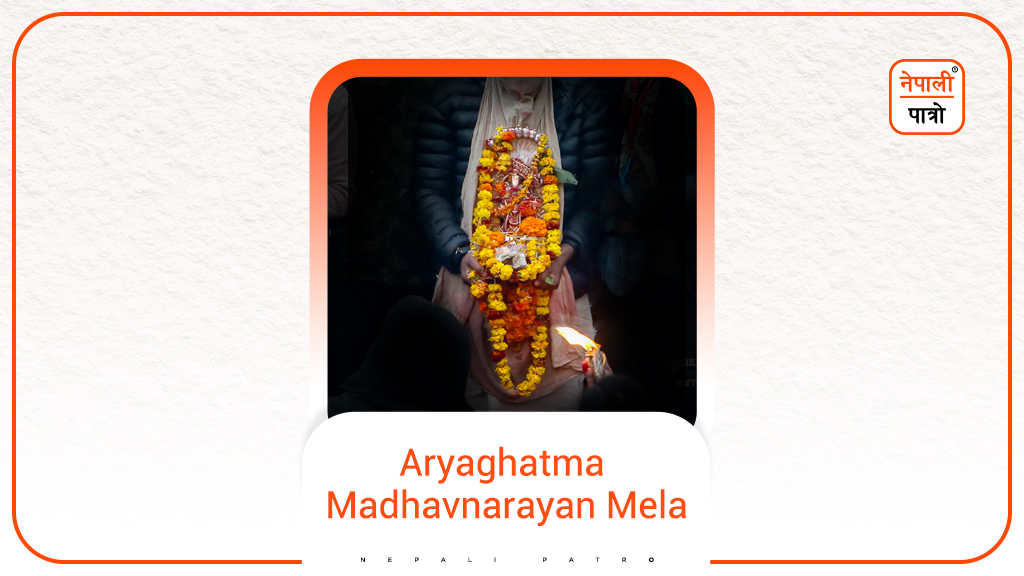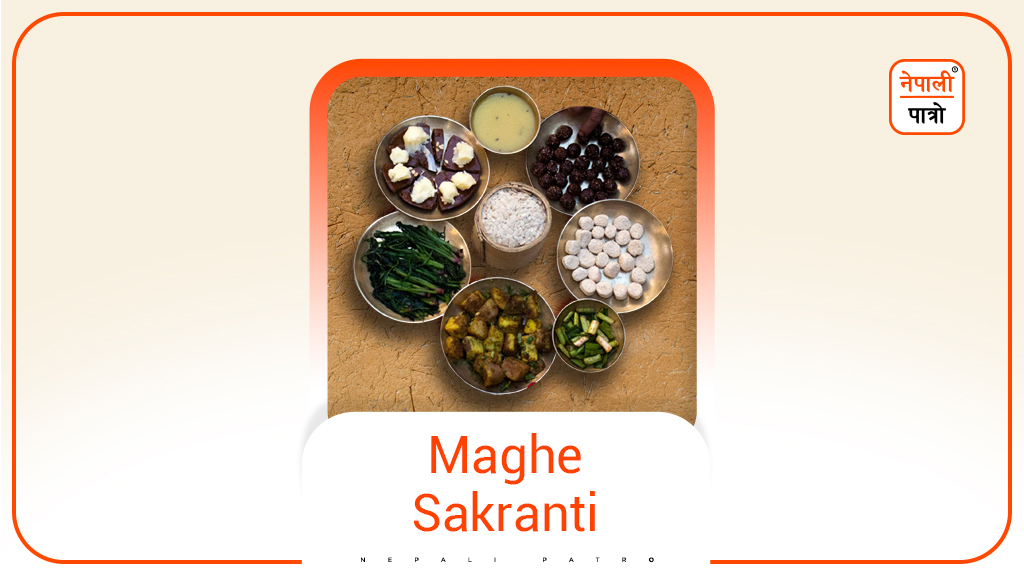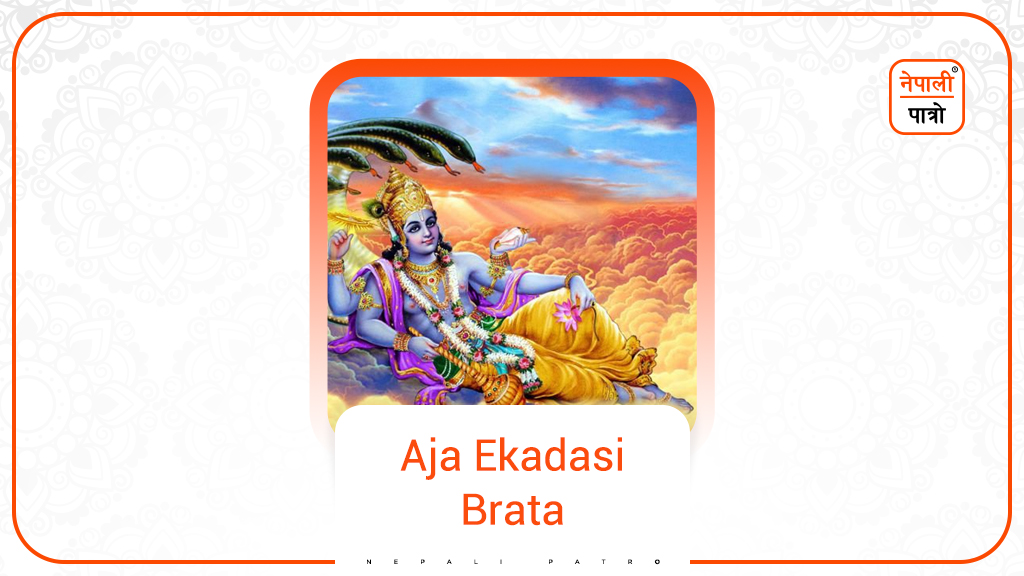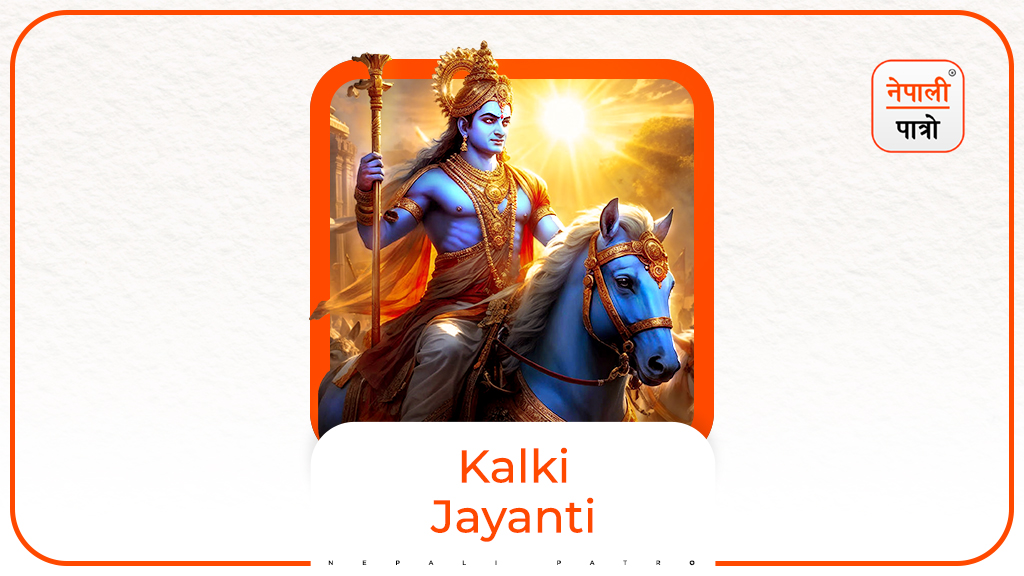
Madhav Narayan Festival
Introduction
Madhav Narayan Festival. Madhav Narayan Festival is a month-long festival dedicated to God Madhav Narayan or Lord Bishnu. This festival is celebrated during the lunar month of Poush and Magh. Madhav Narayan festival is celebrated from Paush Shukla Purnima to Magh Shukla Purnima. Paush is also called “Pohela” as per the Nepal Sambat calendar. Paush is the ninth and Magh is the tenth month of the Nepali lunar calendar also known as Bikram Sambat/Samvat. This festival is celebrated with great fervor in Nepal and in some parts of India as well.
Madhav Narayan Celebration
During this festival, the idol of Madhav Narayan is taken on a journey from Sankhu of Kathmandu district to Panauti, Kavre via Triveni Ghat at Bhaktapur, passing through Changu Narayan, Pashupatinath Temple, Pharping Shesh Narayan, and all the way back to Sankhu on foot.
During the celebration of Madhav Narayan, people gather and listen to the very old mythological story of Swasthani Brata Katha, and conduct a fast for the entire month. Swasthani Brata Katha is dedicated to Lord Shiva and Goddess Parvati respectively. It is usually recited during the evening by a householder for gathered family members of the family to listen. And, the festival is celebrated by performing established special rituals throughout the month. But, Madhav Narayan, celebrated during the same time is the religious Hindu festival devoted to Lord Bishnu.
Madhav Narayan is one of the faces of Lord Bishnu among different faces. It refers to the one who is worshipped during the month of Magh. According to one of the Puran “Bishnu Puran”, both Lord Bishnu and Goddess Bajrayogini have 12 names for the twelve months of a year. Their names for the 10th Nepali month of Magh are Madhav Narayan and Shri Swasthani respectively. This is the reason why both these Madhav Narayan and Swasthani Brat rituals are worshipped together this same month.
Every year, thousands of devotees reach the premises of Hanuman ghat of Bhaktapur to witness or to observe the Brat (Fasting), dedicated to Lord Madhav Narayan. Male Hindu devotees observing the Brat take a bath in the holy Hanumante River after rolling on the ground in a salutation position as a part of this holy ritual. They stay submerged in water till the priest finishes his Mantras. This ceremony is normally done on the final day of this month-long Madhav Narayan fasting festival, in Bhaktapur, on the outskirts of Kathmandu. This holy procession takes place along the narrow streets of Bhaktapur.
During this procession people dressed as deities are also carried on palanquins as holy water is sprinkled on them all along the route. Various of these rituals are also performed in the river Bagmati, outside the western premises of Pashupatinath temple in Kathmandu.
Swasthani Brat Katha and Madhav Narayan festivals are considered to be auspicious, especially for married women. The married women pray for the prosperous lives of their spouses and their longevity. As a tradition, unmarried girls also observe this one-month-long fast hoping of being blessed with a suitable life partner.
Background
In the Bishnu Puran, it is stated that Lord Bishnu also known as Narayan, the creator plus preservator of the universe was powerless after the creation of the universe. Thus, he came to Sankhu of Kathmandu, Nepal at that time.
There, he began to worship Goddess Bajryogini as Goddess Swasthani, taking the fast for thirty days. He divided the month-long worship into twelve days of Pilgrimage (tirtha), nine days for worshiping snake kings, and nine days worshiping the water resources. This holy act he performed helped him to get reinstated as the omniscient power of the universe.
Ritual followed by the followers
The followers nowadays are following in his footsteps as they started observing the fast for penance and to have their wishes fulfilled. As to understand why devotees go to the four places on foot during this period, as per Historians: “Lord Bishnu to complete his fasting ritual on the 30th day, needed some items. Thus, to collect Ek-Mukhe Rudraksha (Elaeocarpus Ganitrus), he first reached Sleshmantak Forest at Pashupatinath.
Then he went to Pharping to get golden lotus flowers. After that, he took on to Panauti to get 108 different types of flowers. And at last to Changu Narayan so as to collect rice grains from the Satyayug (golden-age)”. Lord Bishnu made the whole trip on foot, and that is why the pilgrims today during this month-long fasting ritual also make the same trip.
It is stated that on the last day of the Fast, “Lord Indra came to Sankhu and took the responsibility of organizing an offering (puja)”. To grace the process of his offering, “Lord Bishnu was accompanied by the Saptarishis (seven sages), and so was his vehicle Garud also present to carry him”. The sage Narad Muni also was present as he came to recite the Swasthani Katha. Thus, honoring this tradition, even today seven men representing the seven sages are present during the festival. One person is there to represent Narad Muni, the one who recites the story. Likewise, there is another man representing Garud who carries Lord Bishnu’s idol.
In Sakhu, during this Month-long worship to the Lord Madhav Narayan, the male residents from seven different families participate in this festival as Sapta Rishis. These seven Saptarishis follow a strict diet and rituals to stay pure during the whole month. These seven sages or saptarishis avoid salt, human touch along with other luxuries including the warmth of the bed, three meals a day, even a roof above their head, and shoes to name a few.
Following a strict diet of milk, rice, molasses, ghee with red radish, orange, and apples they have to get up early in the morning during the ritual normally around 4 o’clock every day. After taking a bath, they would perform offerings and puja, etc.
Following the footsteps of lord Bishnu, the devotees, hundreds of thousands of them flock to Sankhu every year. They take shelter on the temple premises or visit the temple every day. These male devotees go to the Bajrayogini temple on the 13th day from the Salinadi river to offer prayers. During the ritual, also known as ‘Dun Danegu’, or ‘Silaman Tulegu” in the Bhaktapur area, they lay flat on the ground with hands stretched out in salutation and roll all the way to the river. They return from the bath in the same way without taking even a single step on foot.
On the 14th day, they make offerings at Pashupatinath Temple and continue to Shesh Narayan Temple at Pharping on the 15th day. In this way, they reach Tribeni Ghat, Panauti on the 19th day, and on to Changu Narayan on the 27th. On each and every occasion of their trip, they take a bath at the sacred river, perform the offering and come back to Sankhu for a night’s sleep.
Finale
Though the Madhav Narayan festival celebration coincides with Shri Swasthani Brat Katha, both of these celebrations are different. The celebration might differ a bit in different places such as Bhaktapur, Kathmandu, and Lalitpur but is celebrated with equal zeal and fervor as described above. Narayan is another name for Lord Bishnu, and Madhav Narayan refers to the name of Bishnu called during the month of Magh, thus this festival is called the Madhav Narayan festival. To Read this article in the Nepali Language please click here.


